A potted history of the bicycle from early ‘boneshakers’ and Penny Farthings to the latest models.
The Running Machine
 Photo by Gun Powder Ma wikipedia
Photo by Gun Powder Ma wikipedia
The Velocipede
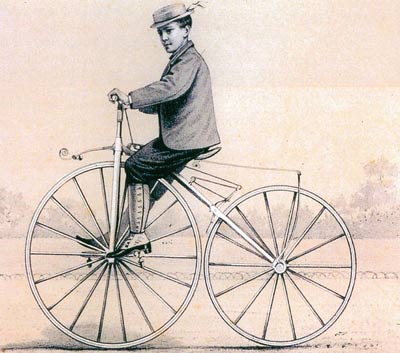
Developed in the early 1860s, developed by two Frenchmen, Pierre Michaux and Pierre Lallement.[2] The velocipede had no chain, wooden wheels, but was powered by pedals on front wheel. The wooden wheels made it a bumpy ride, but the basic framework of the bike is taken shape.
Some velocipede were given the nickname ‘boneshakers’ for their uncomfortable ride.
Rod-Driven Velocipede
A Scotsman Thomas McCall added an important development to the velocipede by adding on a mechanisms to driver the back wheel. It was a rather inefficient rod and the bike wasn’t a huge success. But, an important development nevertheless.
Penny Farthing – Ordinary Bicycle
At the time they were known as an ‘ordinary bicycle’. They were developed during the 1870s; James Starley played a key role. He took the French boneshaker model and increasingly added a larger front wheel. They all had a direct drive – pedalling moved the wheel directly. The large front wheel enabled a faster speed because of the bigger radius of wheel. For good reason it was considered unsafe. However, it became an icon of the late Victorian period and was also used in the early sport of cycle races.
Safety Bicycle
The safety bicycle forms the basis of the modern idea of a bicycle. The breakthrough was to use a chain mechanism so pedals were not directly linked to the wheel. This replaced the need for a large rear wheel and meant the rider was much closer to the ground. It was these cheap, lighter safety bicycles than enabled the bicycle boom of the 1890s.
The safety bicycle was given a further boost by the re-invention of the pneumatic tyre by John Dunlop in 1888. This made the bicycle less jarring.
Early Racing Bikes
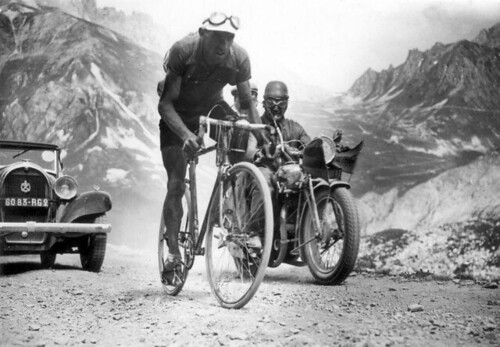
The early racing bikes used in the Tour de France had no gears. The only gear change involved taking out the wheel and using a different cog on the reverse side of the wheel. The roads were more like dust carts. The organisers wanted to make it as tough as possible. I guess modern riders have it ‘easy’ in comparison
The Rear Dérailleur
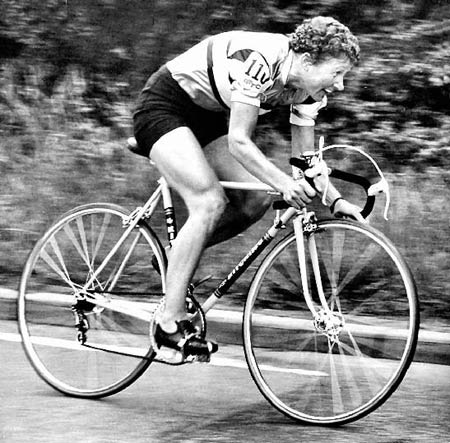
One of the great developments in the bicycle was a system of gears which enabled cyclists a greater choice of gears for cycling up different gradients. In this bike, the great cyclist Beryl Burton is riding in a time trial with a choice of gears on the back.
The Tricycle

David Duffield and the tricycle
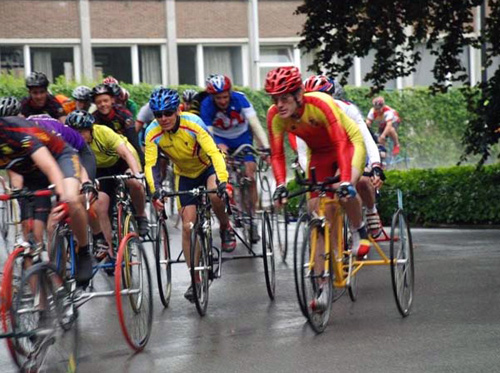
From the Tricycle world championships
The Tandem and More
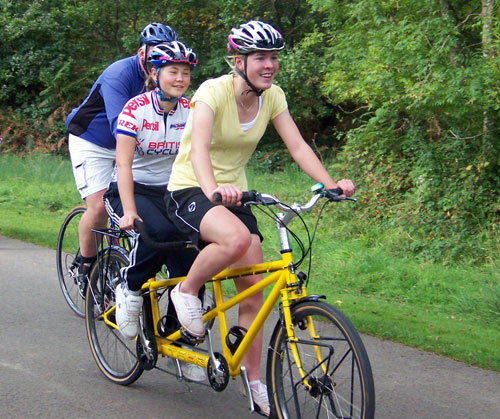
Twice the Joy.
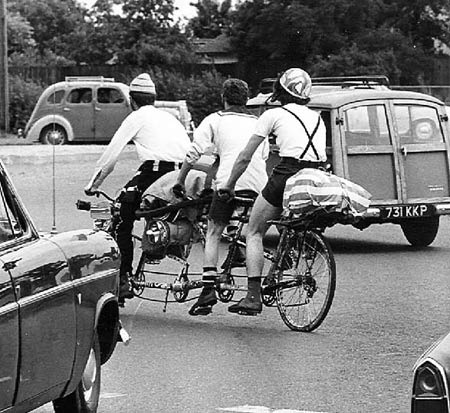
Off on holiday.
The Orient 10 Person Bike 1896. The US experienced a cycling boom at the turn of the century, before the advent of the motor car.
Time Trial Bike

In the 1989 Tour de France, Greg LeMond overcame a deficit of 50 seconds in the final time trial to snatch overall victory by just 8 seconds. His use of time trial bars was key in giving an aerodynamic advantage.
Graeme Obree in a Superman position. One of the most aerodynamic positions. Graeme Obree twice broke the World Hour Record on a custom time trial bike he designed himself.
BMX Bikes

BMX developed in the 1970s, as youngster emulated motor cross racing. The film E.T. helped cement the popularity of this small versatile bike.
Mountain Bikes
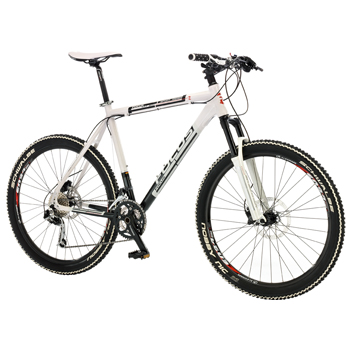
Developed in California during the 1970s, the mountain bike helped to revitalise the bicycle industry. Initially designed for extreme downhill racing, the bike was more versatile enabling people to cycle off road. It also later became a fashionable item on the streets.
Foldup Bikes

A Brompton fold up from the Brompton World Championships.
Town Bike / Hybrid Bike

The essential aspects of the bicycle have changed little since the Ninenteenth century.

A classic Dutch bike.
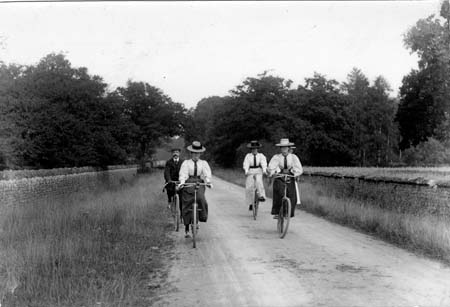
The bicycle in late Victorian times gave women a new independence and freedom. Step through bicycles were developed to make it easier for women to cycle with skirts
Family Carriers

A family carrier in nineteenth century Oxford.

A modern day family carrier.
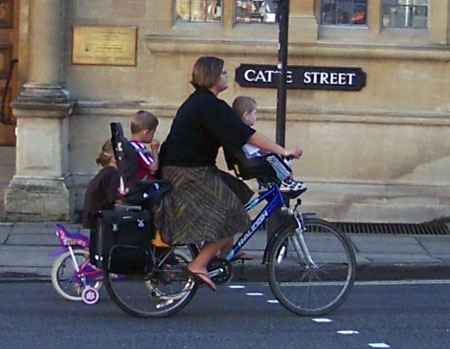
Bikes as a family carrier
Bizarre Bicycles
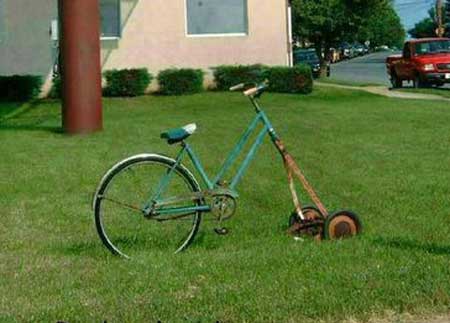
The bicycle lawn mower. Unusual uses for bikes
Related

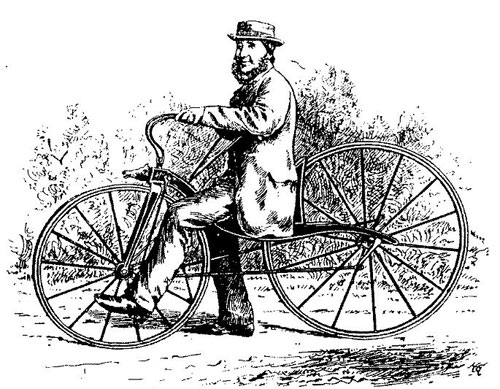

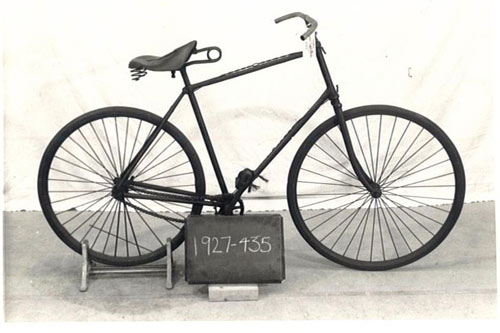

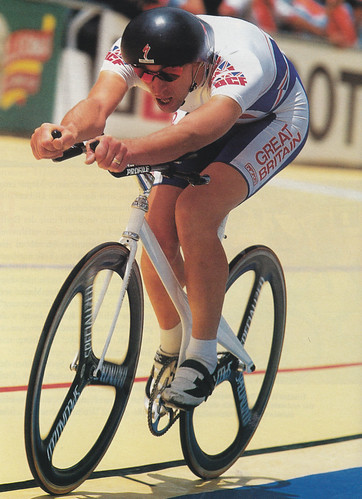
my 1st bike was a dayton dawes heeavy steel heavier than 531 i bought some cane rims stuck a
hutch tub on them they weren”t tubular rims didn”t care I WAS BULLET PROOF rode williams chainwheel with williams cotterpin cranks single fix wheel 69inch just a front brake rode my 1st 25 mile time trial at the tender age of 14 on that bike happy memories jonty